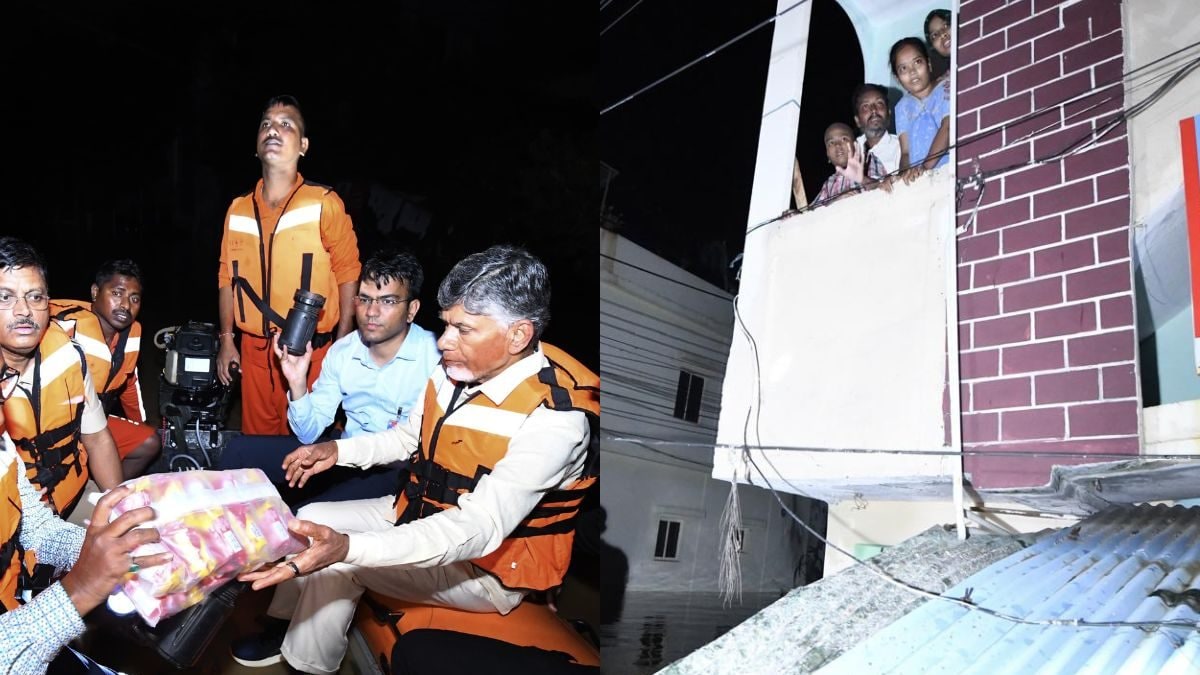Torrential rains battered Telangana and Andhra Pradesh for the second consecutive day, leading to widespread flooding, disruptions in transportation, and sadly, 10 fatalities. The relentless downpour caused rivers to swell, leading to evacuations of thousands of people to relief camps. The heavy rains disrupted transportation, impacting road and rail networks and necessitating the cancellation and diversion of trains. With more rainfall expected, authorities took precautions including school closures and work-from-home advisories.
Impact of Heavy Rains in Telangana and Andhra Pradesh
The heavy rains in Telangana and Andhra Pradesh resulted in significant impacts across both states, leading to disruptions and hardship for residents.
Disruptions in Transportation
The incessant rains caused severe disruptions to road and rail networks. The South Central Railway reported the cancellation of 99 trains, partial cancellation of four trains, and diversion of 54 trains due to flooding on tracks. This caused significant inconvenience for travelers.
Floods and Evacuations
Heavy rainfall led to flooding in various parts of both states. Rivers overflowed their banks, inundating nearby areas and forcing the evacuation of thousands of people to relief camps.
Loss of Life
The heavy rains tragically resulted in 10 fatalities across both states. In Andhra Pradesh, nine rain-related deaths were reported, and one person remained missing. The floods caused widespread damage to property and infrastructure.
Response of Government and Authorities
The respective governments of Telangana and Andhra Pradesh mobilized resources and implemented measures to mitigate the effects of the floods.
Central Government Support
Prime Minister Narendra Modi and Union Home Minister Amit Shah spoke with the chief ministers of both states, expressing their concern and assuring full support from the Centre.
State-level Initiatives
The Telangana Chief Minister, A Revanth Reddy, appealed to offices to allow employees to work from home, minimizing travel risks during the downpour. Telangana also declared a holiday for educational institutions in various districts. The Andhra Pradesh Chief Minister, N Chandrababu Naidu, toured affected areas and directed state authorities to evacuate residents to relief camps, providing food and essential support.
Meteorological Predictions and Alert
The India Meteorological Department (IMD) attributed the heavy rainfall to a depression over the north Andhra Pradesh and south Odisha coasts. The IMD issued warnings for continued rainfall, with red alerts for heavy rainfall in various districts of both states.
Impact of Meteorological Phenomena
The movement of the depression and its transformation into a well-marked low pressure area over the next 24 hours contributed to the persistent rain in the region. The IMD continues to monitor the weather system and issue necessary alerts for public safety.
Economic Impact of Floods
The heavy rainfall and consequent floods significantly impacted the economies of both states. In Andhra Pradesh, over 1.1 lakh hectares of agricultural fields and 7,360 hectares of horticultural fields were reported damaged.
Damage to Infrastructure
The floods also damaged roads and infrastructure, impacting connectivity and hindering economic activity in the affected areas. The heavy rains also disrupted business operations and caused losses for various sectors.
Aftermath and Relief Efforts
The authorities in both states continue their efforts to alleviate the situation.
Evacuation and Relief
Evacuations of residents to safer areas continue, and the authorities are working on providing essential supplies and food at the relief camps.
Recovery and Rehabilitation
Following the floods, efforts will focus on damage assessment and restoring normalcy. This will involve infrastructure repair, rehabilitation of affected residents, and assistance to restore livelihood and agricultural activities.
Takeaways from Heavy Rains
The severe weather events highlight the importance of preparedness and response mechanisms.
Importance of Early Warnings and Alerts
The timely issuance of warnings and alerts from the meteorological department is crucial in allowing authorities to prepare for impending heavy rainfall and take necessary precautions.
Enhanced Flood Management Systems
The need for robust flood management systems, including infrastructure for early warning, evacuation, and damage mitigation, is paramount.
Strengthening of Infrastructure
Resilient infrastructure that can withstand extreme weather events, including road, rail, and drainage networks, is crucial in mitigating the impact of floods.
Importance of Community Preparedness
Educating and engaging communities in preparedness measures, including flood preparedness training, can contribute to a more effective response during emergencies.
The heavy rains in Telangana and Andhra Pradesh underscore the need for robust preparedness measures and an effective response mechanism to cope with natural disasters. The efforts of both states in addressing the impact of these floods demonstrate the importance of collaboration and collective action in mitigating such challenging events.




